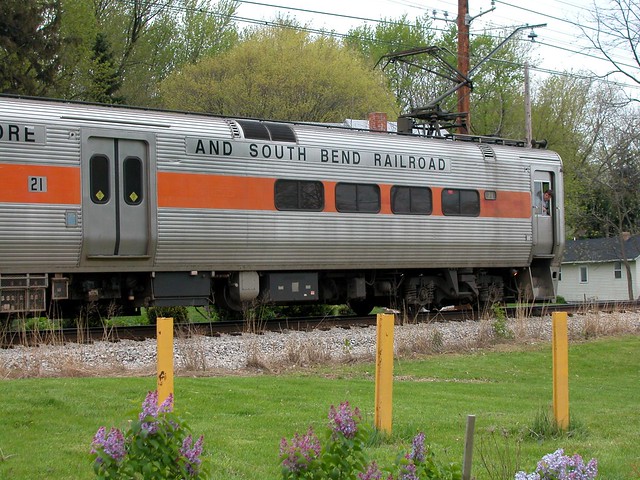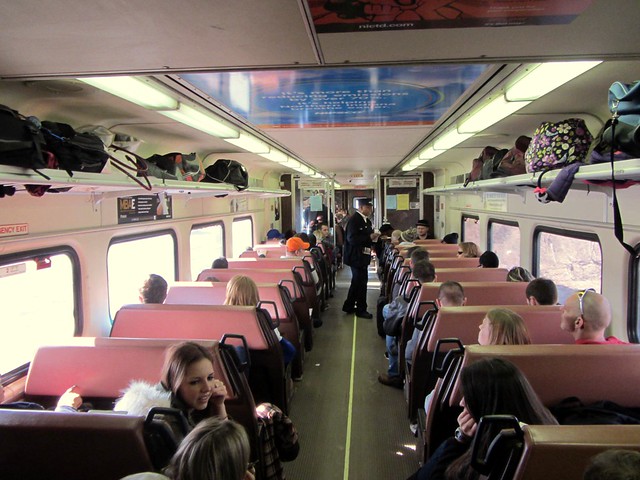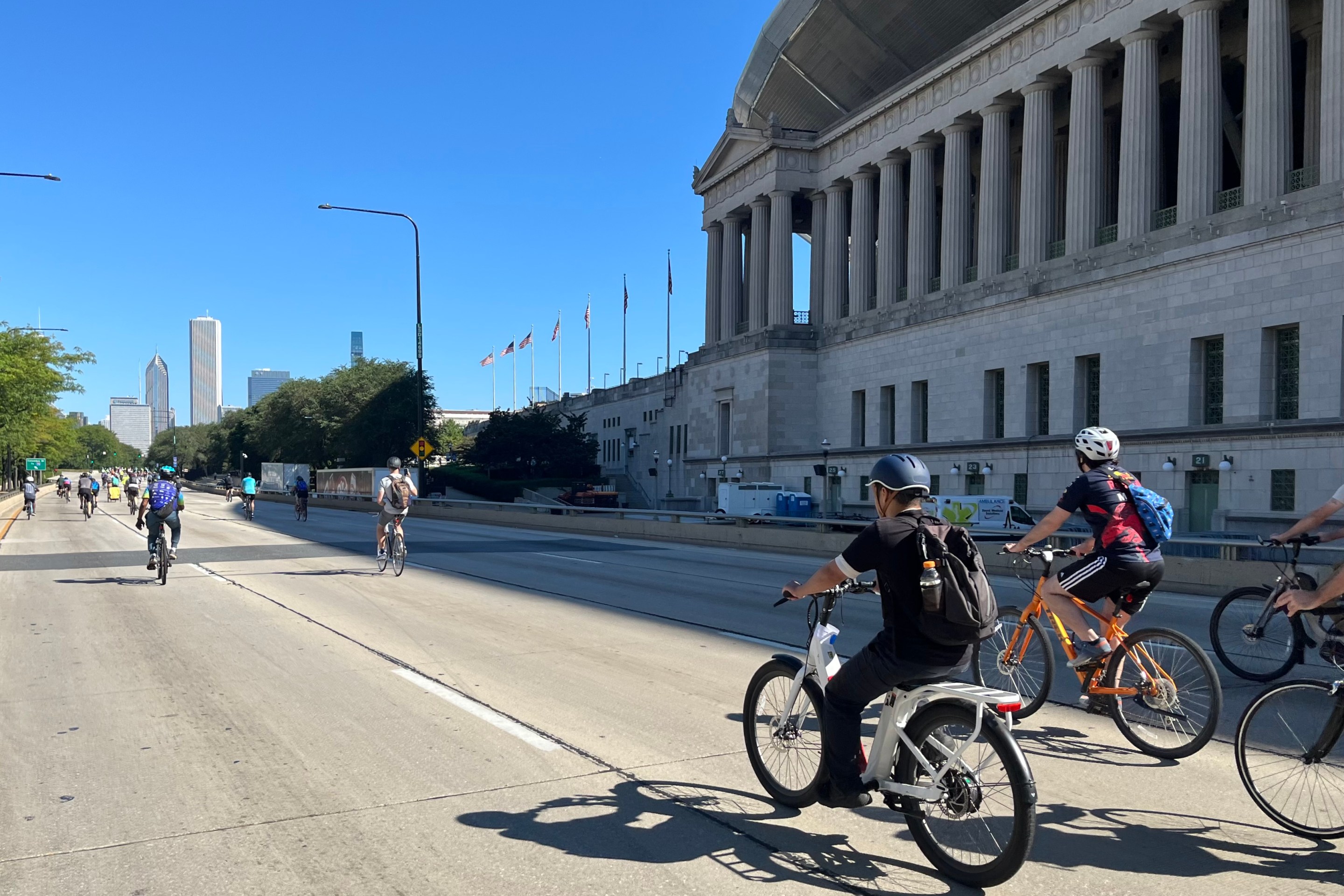Two weeks ago, at a friend's suggestion, I started a petition to lobby the South Shore Line to allow bicycles on trains, which currently has 125 signers. Our motivation was mostly selfish: We want to be able to travel to the Dunes National Lakeshore and other places in northwest Indiana with our bikes. So I reached out to Northern Indiana Commuter Transportation District, the agency that operates the South Shore Line. Yesterday afternoon, when I called John Parsons, NICTD's planning and marketing director, he said he was expecting me since he had already received many emails about bikes on trains (the petition website automatically sends them).
Note: Passengers may bring bikes if inside luggage and can fit in the luggage rack.
Parsons said he appreciated the petition emails because they told him why people want to take their bicycles on the South Shore Line. Many people, like me, want to visit the Dunes, while others want to be able to visit family in South Bend without having to be driven to and from the station. People left comments about how bicycles can fill the "last mile" gap to your final destination – that leg of the trip where there's often no transit service – and that allowing bicycles on trains could increase ridership.
The signatures weren't all from Chicagoans. Bruce Spitzer from South Bend wrote, "This is South Bend's 'direct connection' to Chicago! Yet we bicyclists cannot enjoy easily taking our bikes to Chicago. We'd love to bike in Chicago via the South Shore!" Russ Perdiu from Tippecanoe, IN, said, "With gas pricing sky high and traffic a total disaster no matter what city you are in it is important to allow access to alternative travel options."
So why can't bikes go on South Shore Line trains? Parsons said the limitations are pretty straightforward. A lot of the route's 19 stations have low-level boarding that requires people to enter trains via narrow stairs and doorways at the end of the cars. "You literally cannot bring a bike up these stairwells," he explained. The agency is converting more stations to high-level boarding in order to use the cars' middle doors, which would improve access for people with disabilities.
The other problem is the lack of space in the cars. While there is space for people using wheelchairs, these spaces cannot hold bicycles, according to Parsons. Parsons also told me about how the train line's low frequency would affect conflicts. "What do you do when there's someone in a wheelchair using the space and you have a family with bikes [say, at Beverly Shores] and this is the last train to South Bend? Metra has a lot more frequency than we do."
The good news is that the South Shore Line and the Northwestern Indiana Regional Planning Commission (NIRPC) are conducting a study to see what can be done. Parsons said the study would look at "what physical changes could take place in the cars, how we go about managing bikes on trains given the types of equipment we have, and the service frequencies we have." NIRPC and NICTD are currently discussing the scope of the study and held their first meeting last week.
Jack Eskin, a planner at NIRPC, says that the study is largely an engineering one, "to show what NICTD would have to do in capital improvements to their cars, and how much it would cost to create space for bikes." Eskin said that the study would be published "well into 2014."
Updated to add interview with Eskin.







